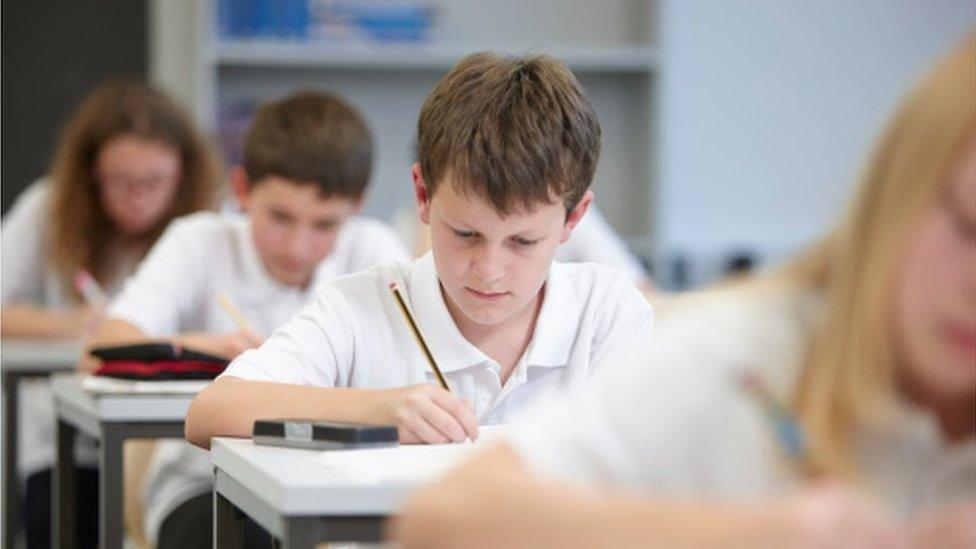Number of secondary pupils in England to rise 15% by 2027
- Published

There will be over 400,000 more pupils in England's state secondary schools by the year 2027, indicate.
Secondary pupil numbers are expected to rise by 14.7% over the next 10 years, the Department for Education projects.
The rise is fuelled by a baby boom in the early 2000s that is making its way through the education system.
School leaders say the projections highlight the challenge to find enough places for a growing population, and the pressures on school budgets.
The data shows England's secondary school population is expected to hit 3.3 million in 2027 - 418,000 higher than in 2018.
Primary schools level off
In state primaries, where there has been an increase in pupil numbers in recent years, the numbers are levelling off.
There are projected to be around 4.5 million primary-age pupils by 2027 - down by around 112,000 compared to around 4.6 million this year.
DfE statisticians said the changes to the school age population were mainly driven by birth rates.
The department's projection document said that while the numbers of pupils born outside the UK had a "very small" effect on the size of the school population, the overall birth rate could be affected by an increase in the numbers of children born to women who were not born in the UK.
These women overall tended to have higher fertility rates, the department said.
Government figures show that the number of children born to non-UK born women increased by around 75% between 2002 and 2013, and this was a period of increased births generally.
Children born over the course of these years are currently in the school system.
The 'challenge of places'
The DfE projections also gave a number of scenarios which could affect overall pupil numbers.
For example, if there was high net migration, total pupil numbers (nursery, primary and secondary) could be 48,000 higher than projected by 2027, and if there was low net migration they would be 48,000 lower.
And if there were high fertility rates, numbers could be 95,000 higher, but if fertility rates were low they would be around 133,000 lower.
Paul Whiteman, general secretary of the National Association of Head Teachers, said the figures presented a challenge.
"The challenge to find sufficient school places for our growing school population is becoming much harder because, whilst local authorities have the responsibility to oversee this, they have no control over admissions policies in many schools.
"It is clear that we need a proper national strategy to guarantee enough school places for every child, particularly in secondary schools.
"The increased pupil population creates other strains in a system that is already at financial breaking point.
"Schools are being asked to do so much more than they were a decade ago, and these extra expectations and additional pupils come at a cost which is not being met by current levels of funding.
"This is a real concern for school leaders everywhere in the country and we urgently need the Treasury to find more money for schools and young people."
But the Department or Education said the government had driven the largest creation of school places in two generations, and that by 2020 there would be a million more new places across the education system than there were in 2010.